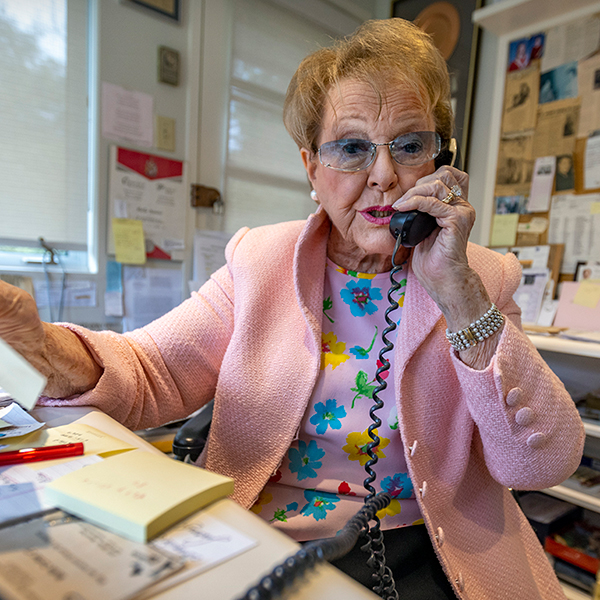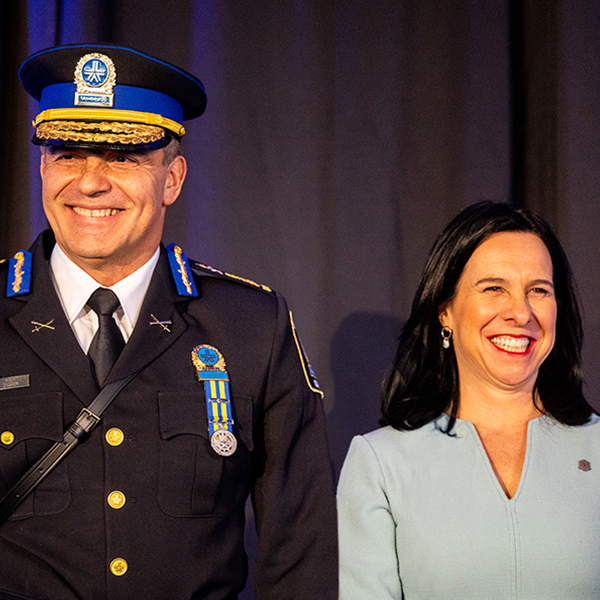In a recent article about the dearth of reasonably-priced apartments in New York City, the New York Times declared that the Big Apple was contending with “a crisis in affordability.” New York City mayor Eric Adams would be quick to agree.
At an August rally for affordable housing, Adams said, “We hear all over the city no matter where we go — we hear affordable housing, housing, housing, housing. That is the number one issue that we hear. Far too often people who are the doormen, the cleaners, people who are the laborers, the contractors, the builders, they cannot afford to live in the space that they are building and developing in their city.”
Adams, who pledged that affordable housing is one of his top priorities, has promised to spend $22 billion over a ten-year span to address the issue. Earlier this year, he appointed Jessica Katz, BA’98, a passionate advocate for more affordable housing, as his city’s chief housing officer. The city is faced with “a problem decades in the making,” says Katz.
Amid a population re-boom, New York has the highest average rents in the U.S. at $3,260 per month, and the country’s largest homeless population. It also faces a basic geography challenge, in that Manhattan – like Montreal – is an island, and therefore bounded in its horizontal sprawl.
A related challenge is bureaucracy. The New York City Housing Authority (NYCHA) faces an “incredibly complex regulation landscape,” says Katz. The Adams administration has proposed citywide zoning reforms intended to spur the creation of more affordable housing, but it might not be an easy goal to accomplish. The city has a long history of red tape and competing interests. Still, Katz insists that New York – and other cities – need to think outside the box if they are to effectively tackle housing insecurity. The challenges of population density are so critical it is crucial to “get cities right.”
Katz’s office recently released Housing Our Neighbors: A Blueprint for Housing and Homelessness, a report that, among other things, prioritizes homelessness as an issue that needs to be urgently addressed.
Katz takes pride in the fact that homeless and formerly homeless New Yorkers were widely consulted for the report “[so that we could] hear directly from those with lived experience on how we can do better,” she stated at a news conference. Katz pledged to “finally begin an accurate homeless census. Too often, government has tried to get cute with these numbers and not acknowledge the reality of our homeless problem. We’ve always just looked away and swept it under the rug, until now.”
In her current position, Katz attracts a fair bit of media attention – but she first became the subject of international news coverage as a baby when she became known as “the littlest Refusenik.” Katz was born in the former Soviet Union with a condition known as malabsorption syndrome. She wasn’t able to digest milk properly and baby formula was enormously difficult to access in the Soviet Union. Her health was seriously imperiled and her parents’ requests to emigrate were initially refused.
Ted Kennedy, the legendary longtime U.S. senator, personally intervened on her family’s behalf with Soviet leader Leonid Brezhnev. Katz and her family were allowed to move to the U.S. She grew up in Boston and has cited Kennedy as one of her primary inspirations for choosing a career in public service.
“I knew I wanted to capital-H help people. And [from my own experience], I knew the U.S. government was there for people who needed help.”
She chose McGill for her undergraduate studies after a cousin advised her that the University compared very favourably to a liberal arts college in the U.S. that she was considering. “The Harvard of Canada, and all that.”
Katz says she is a huge fan of social workers and the role that they play, but realized she couldn’t do the job herself. “I’m not a good fit as a social worker,” she says. “I cry too easily.” As she progressed in her studies, she chose a different path to help people.
After graduating from McGill with a major in urban geography, she earned a master’s degree in city planning from MIT. She then worked at a Boston non-profit that was building housing for people with mental illnesses and a history of homelessness. “That felt like a really good mix between my goal to help cities be better and to help people, but also for my role to be around the financing and structuring, and intergovernmental side.” Eventually, she moved to New York.
Before taking on her current gig, Katz was the executive director of the Citizens Housing & Planning Council (CHPC), an 80-year-old research and advocacy organization focused on housing and planning issues in New York City. The CHPC prioritized taking ideas from other urban areas – she learned, for instance, that Toronto had a robust basement apartment program, peeling back “the regulatory thicket” in order to make those flats safe and legal. After four years in that advocacy world telling people what they needed to do better, she was invited to put what she had learned into practice as New York’s chief housing officer.
Katz remembers what it was like to live in “a somewhat depressed” Montreal in the nineties. She remembers landlords offering her and her three roommates one or two months of free rent – and they were college kids, not exactly the most coveted of tenants. Renters not only had “a lot of rights, they had a lot of choices. And certainly today in New York, that’s less true,” she says.
It won’t be easy, but Jessica Katz is determined to help change that.
published in September 2022


